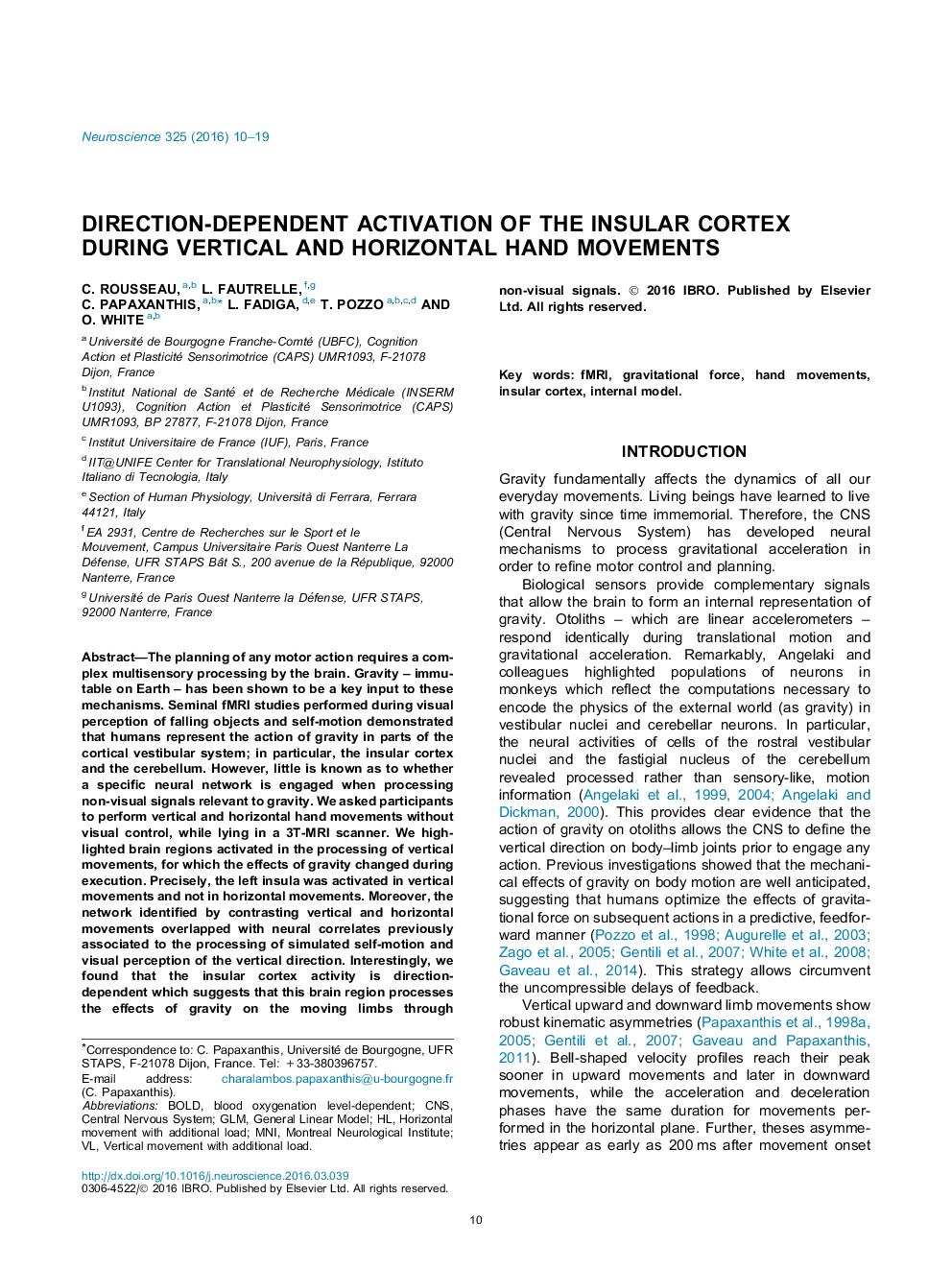| Article ID | Journal | Published Year | Pages | File Type |
|---|---|---|---|---|
| 4337348 | Neuroscience | 2016 | 10 Pages |
•The involvement of insular cortex during hand movements is investigated.•Insular cortex is activated during vertical hand movements without vision.•Insular cortex is not activated during horizontal hand movements without vision.•Insular cortex is sensitive to the effects of gravity on the moving limbs.
The planning of any motor action requires a complex multisensory processing by the brain. Gravity – immutable on Earth – has been shown to be a key input to these mechanisms. Seminal fMRI studies performed during visual perception of falling objects and self-motion demonstrated that humans represent the action of gravity in parts of the cortical vestibular system; in particular, the insular cortex and the cerebellum. However, little is known as to whether a specific neural network is engaged when processing non-visual signals relevant to gravity. We asked participants to perform vertical and horizontal hand movements without visual control, while lying in a 3T-MRI scanner. We highlighted brain regions activated in the processing of vertical movements, for which the effects of gravity changed during execution. Precisely, the left insula was activated in vertical movements and not in horizontal movements. Moreover, the network identified by contrasting vertical and horizontal movements overlapped with neural correlates previously associated to the processing of simulated self-motion and visual perception of the vertical direction. Interestingly, we found that the insular cortex activity is direction-dependent which suggests that this brain region processes the effects of gravity on the moving limbs through non-visual signals.
